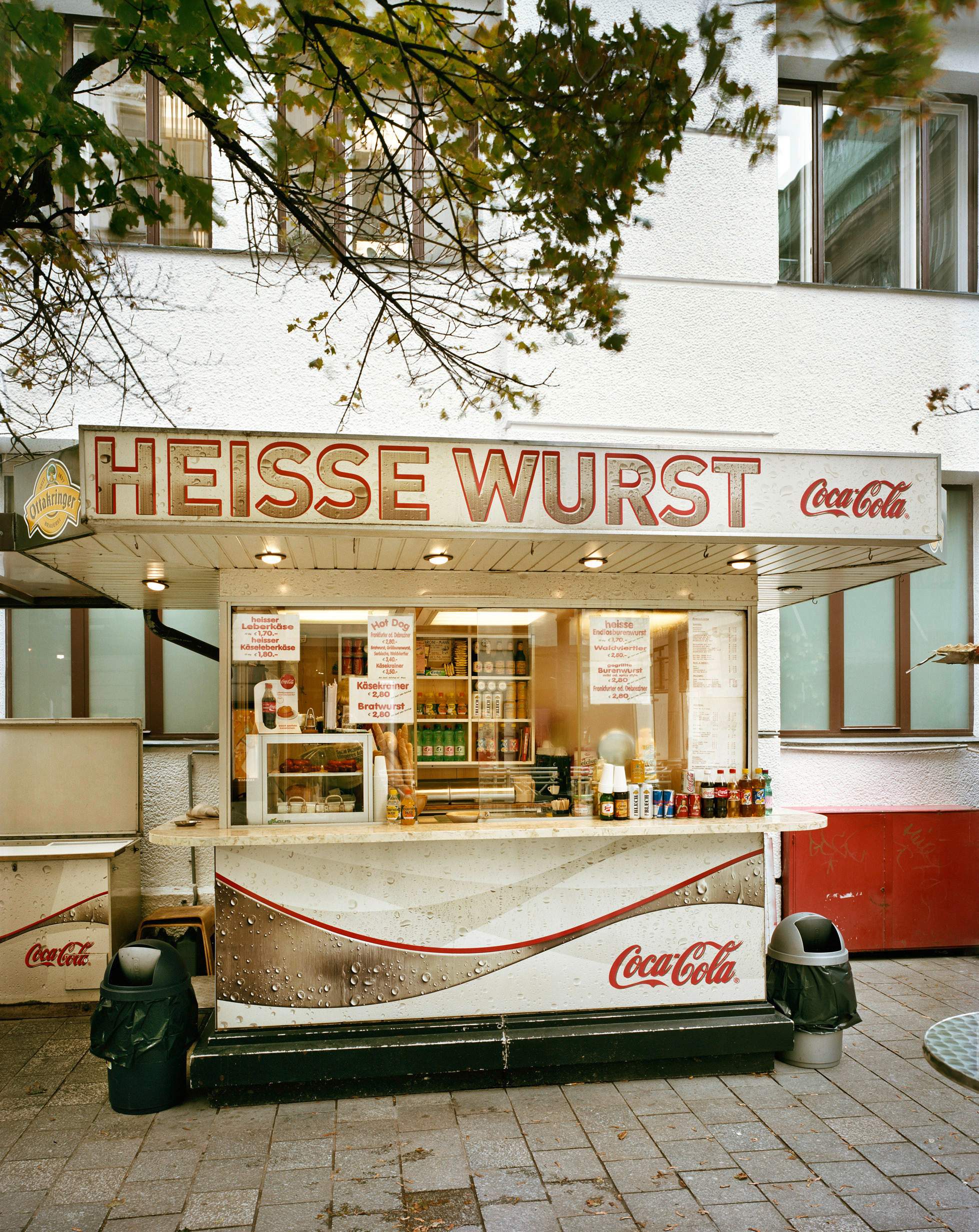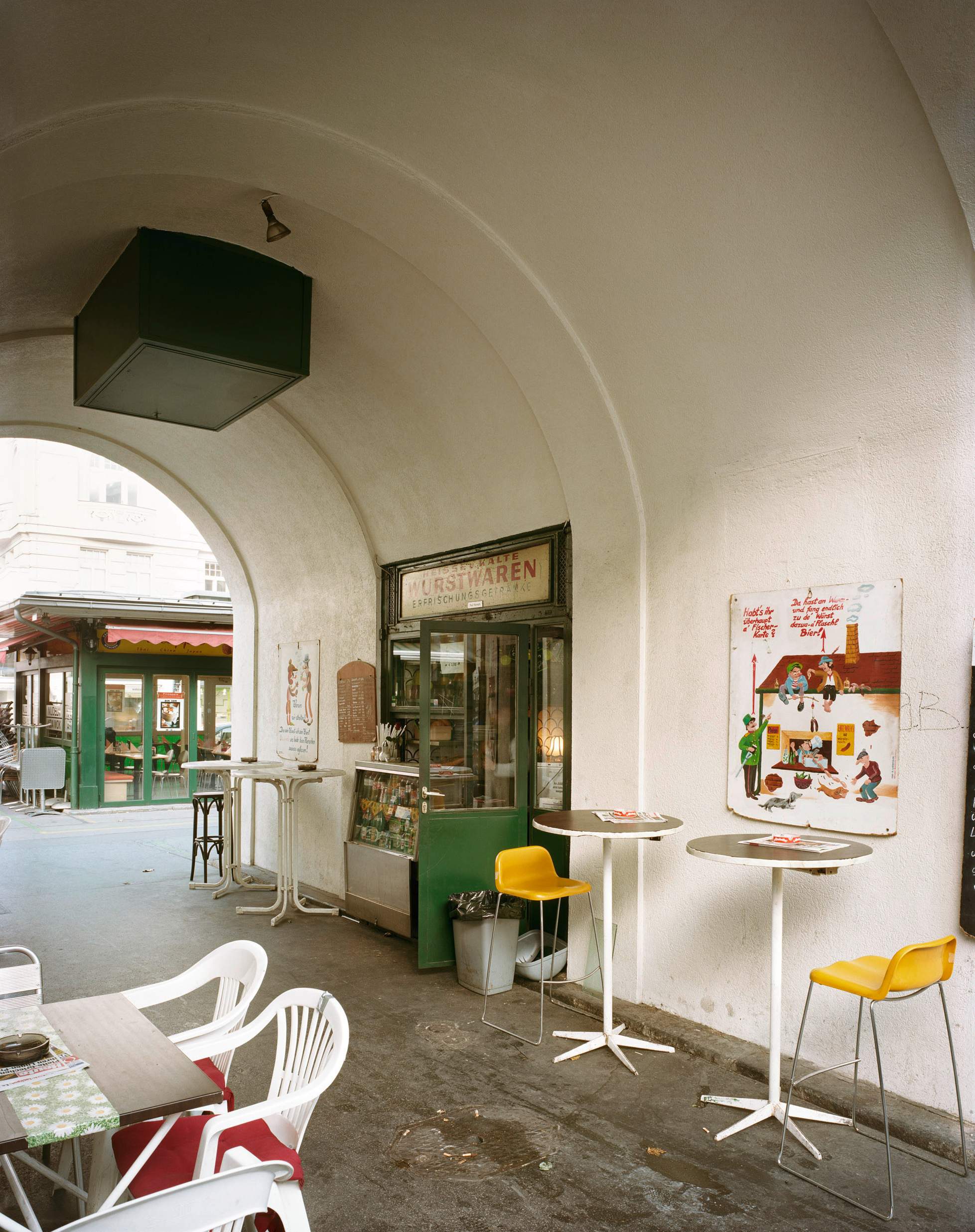Concierge: Sausage stands / Vienna
Dog days
Vienna’s sausage stands have stood the test of time, while laying bare the city’s changing appetites and clientele. And now one photographer – a Monocle regular – is giving the topic the focus it deserves.
Austrian photographer and Monocle regular Stefan Oláh is known for his sharp eye for façades and interiors but also the lesser-known idea of “transit architecture”. He shoots non-places and hidden spots, the spaces in between that come to define cities by accident rather than by design.

The first edition of his photo book on Vienna’s Würstelstände (sausage stands) was titled The Hot 95 and was released in 2013 by historic publisher Verlag Anton Pustet. But that was just the beginning of Oláh’s obsession. This autumn a batch of new images was displayed at a branch of Radatz, one of Vienna’s best-known butchers, which supported the book’s publication then and now (and, of course, supplies many of the sausage stands depicted). In a testament to the Würstelstände’s place in the collective heart of Viennese residents, the city’s mayor Michael Ludwig – one of several opening night dignitaries – arrived early to quiz Oláh about his work. “I told him that there’s always a bin beside the stands,” Oláh tells Monocle. “But no two stands have the same type of bin or system of garbage disposal. He found it quite amusing.” The Würstelstände is also a reflection of the way in which unplanned elements and ideas often define cities better than slick marketing campaigns or the best-laid branding plans.
As with Oláh’s previous project on petrol stations,his examination of sausage stands has allowed him to look closer at his city and glean deeper insights about it. Studying sausage stands also reveals deeper truths about Vienna’s urban life and changing appetites. “A lot of the stands now offer organic food and beer, and the kiosk designs have changed too,” he says, showing Monocle one of the newer images, of a stand called Zum Goldenen Würstel (“At the Golden Sausage”) in the city’s postcard-pretty Innere Stadt. With a sleek metal-and-glass roof over the counter and large windows, it’s strikingly different from the old boxier kiosks. The oldest stand still in operation is said to be Würstelstand LEO in the Ninth District (now turquoise and perhaps not precisely as it was in 1928). The idea of the sausage stand is said to date back much further, to the Austro-Hungarian empire, with some sources even suggesting that the concept was cooked up as a way for wounded veterans to earn a crust. “There’s a lot of history here,” says Oláh. “A new generation of entrepreneurs has entered the business since I published the first edition.” Some stands have their own tribes too, such as opera-goers’ favourite Bitzinger, exhibiting angular modernism in the shadow of the Albertina museum, or the bright yellow Bad Dog near the Belvedere Palace, which is particularly popular with visitors from Asia.






The ongoing project, like almost all of Oláh’s work, can be slow-going. It requires a certain degree of patience given that no one quite knows how many Würstelstände actually exist in Vienna – Oláh and his assistants simply searched for kiosk-shaped structures on a map, then visited each to see whether it was a stand. Then there’s the weather. For one stand, at the atmospheric address of Am Nordpol (“At the North Pole”) in Vienna’s Second District, Oláh waited two and a half years to get the right shot. “I wanted to capture it in snow and it took that long to get the perfect conditions.”
Typically, Oláh’s frames include few if any people but, when they are there, they could really be anyone – a nod to another essential aspect of the Würstelstände: its egalitarian nature. Their clientele cut across social and cultural boundaries. It’s a cliché but an accurate one: at any given time, blue-collar workers, tourists, celebrities and politicians can be seen standing shoulder to shoulder. Even the word “wurst”, or sausage, is embedded in everyday speech: “Es ist mir Wurscht” – a quintessential Austrian phrase – translates roughly to “I don’t care” and is used by everyone. The Viennese can seem gruff at times but the humble sausage stand is one way to understand the city’s history, economy and appetites more intimately – and get some change from a €10 note. —







Why the sausage stand?
Stefan Oláh’s fascination with the quirkier parts of the built environment began about 15 years ago when he started work on Sechsundzwanzig Wiener Tankstellen, a book documenting another Viennese curiosity: petrol stations tucked into residential buildings. His aim was to show how these stations – more than 26 of them are featured in the book, though many have since vanished – were an idiosyncrasy of his home city and an odd intersection of the old Imperial world and a newer, more mobile one. He was drawn by the unusual layouts and vintage signs, many dating back to the postwar decades. The book, published in 2010, sparked a flurry of interviews. In one of these, Oláh mentioned he might next turn his attention to another Viennese fixture: the Würstelstand. “It was just a passing remark,” he says. “But the publishers kept on asking: so when are you going to do it?”
Five of Stefan Ólah’s favourite Vienna sausage stands
1.
Hermann’s
5-7 Stiftgasse, 1070, in the Wipark Garage
2.
Wiener Würstelstand
1 Pfeilgasse, 1080
3.
Alles Wurscht
1 Börseplatz, 1010
4.
Würstelstand Kaiserzeit
Augartenbrücke/Obere Donaustrasse, 1020
5.
Zum Scharfen Rene
15 Schwarzenbergplatz, 1010
Wurst practice: sausage-stand etiquette
Ordering is an art, as is knowing your Senf (mustard) from your Semmel (dense white bun). Most sausages will be a frankfurter or bratwurst but other options include the cheesy Käsekrainer, long thin Sacherwürstel and smoked Waldviertler. Berliners will recognise the currywurst (as it sounds, drenched in spiced gravy) but the spicy Hungarian-inspired Debreziner might be news to you. While not compulsory, beer is a fundamental part of the Würstelstand experience – especially since, with their late-night opening hours, they might be the only spot to procure one should the mood strike. Among the classics is Vienna’s own Ottakringer beer, alongside other Austrian brews such as Wieselburger, all of which are typically served in a can.


